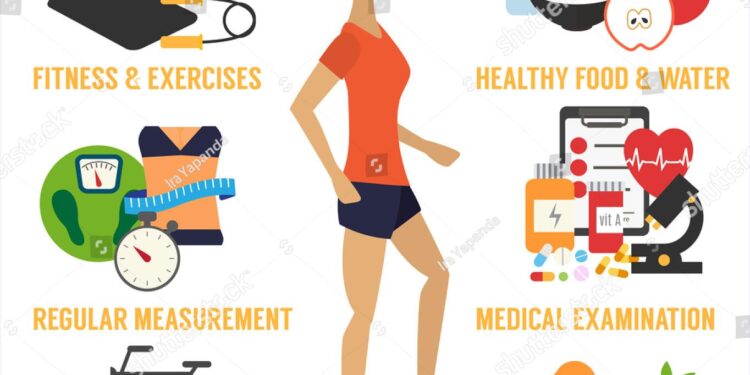A growing body of research continues to highlight the powerful impact of lifestyle choices on cancer outcomes. Recent studies reveal that adopting a healthy lifestyle – including balanced nutrition, regular physical activity, and avoiding tobacco – can significantly reduce the risk of dying from cancer. As cancer remains one of the leading causes of death worldwide, these findings offer vital hope and actionable guidance for individuals seeking to improve their prognosis and overall health. This article explores the latest evidence connecting healthy living with lower cancer mortality rates and what it means for patients and healthcare providers alike.
The Impact of Diet and Exercise on Reducing Cancer Mortality
Emerging research consistently links nutritious diets and regular physical activity to a significant decrease in cancer mortality rates worldwide. Incorporating a variety of whole foods rich in antioxidants, fiber, and essential nutrients appears to enhance the body’s natural defenses against tumor development. Fruits, vegetables, whole grains, and lean proteins collectively contribute to maintaining a balanced immune response, while limiting processed and red meats reduces exposure to carcinogenic compounds. Additionally, exercise promotes improved circulation, hormone regulation, and cellular repair mechanisms, further diminishing cancer progression risks.
- Balanced nutrition: Emphasizing plant-based foods supports anti-inflammatory effects.
- Regular exercise: Engaging in moderate activity at least 150 minutes weekly boosts cellular health.
- Weight management: Maintaining a healthy BMI correlates with lower incidence of several cancer types.
| Lifestyle Factor | Impact on Cancer Mortality Reduction | Supporting Data |
|---|---|---|
| High fruit & vegetable intake | Up to 20% lower risk | Meta-analysis of 15 studies |
| Weekly physical activity | 25% reduction in mortality | Observational cohort data |
| Maintaining healthy weight | 30% decrease in cancer deaths | Population-based studies |
Understanding the Role of Early Detection and Regular Screenings
Early detection plays a pivotal role in improving cancer survival rates. When cancer is identified in its initial stages, treatment options tend to be less invasive and more effective. Regular screenings, such as mammograms, colonoscopies, and Pap smears, are essential tools that enable healthcare professionals to catch abnormalities before symptoms even arise. This proactive approach not only increases the likelihood of successful treatment but also reduces the overall burden on healthcare systems by preventing late-stage diagnoses.
Incorporating routine health checks into your lifestyle can be life-saving. Here’s why regular screenings are indispensable:
- Identify risk factors early: Discover genetic predispositions or lifestyle factors that might increase cancer risk.
- Monitor changes over time: Continuous screening helps track any new developments or growths within the body.
- Empower informed decisions: Early knowledge allows for timely lifestyle adjustments and medical interventions.
| Screening Type | Recommended Age | Frequency |
|---|---|---|
| Mammogram | 40+ | Every 1-2 years |
| Colonoscopy | 50+ | Every 10 years |
| Pap Smear | 21-65 | Every 3 years |
| Low-dose CT Scan (Lung) | 55-80 (High Risk) | Annually |
Practical Lifestyle Changes to Lower Cancer Risk and Improve Outcomes
Adopting balanced dietary habits plays a vital role in reducing cancer risk and enhancing treatment outcomes. Emphasizing a plant-rich diet with an abundance of fruits, vegetables, whole grains, and legumes not only delivers essential antioxidants but also helps regulate body weight-a critical factor in lowering cancer susceptibility. Additionally, limiting processed meats, refined sugars, and excessive alcohol consumption contributes to a healthier internal environment less conducive to cancer development. Regular physical activity, with at least 150 minutes of moderate exercise per week, further supports immune function and metabolic health, thereby reducing cancer mortality risk.
Beyond diet and exercise, lifestyle adjustments such as quitting smoking and minimizing exposure to environmental carcinogens significantly impact survival rates. Quality sleep, stress management, and routine medical screenings also form cornerstones of a proactive cancer risk reduction strategy. The following table summarizes key lifestyle factors and their impact on cancer risk and outcomes:
| Lifestyle Factor | Impact on Cancer Risk | Effect on Treatment Outcomes |
|---|---|---|
| Balanced Diet | Reduces carcinogen exposure | Enhances recovery & immune response |
| Regular Exercise | Maintains healthy weight | Improves therapy tolerance |
| Smoking Cessation | Decreases lung & other cancers | Lowers complications & relapse |
| Stress Management | Limits inflammation | Supports mental well-being |
- Hydration: Keeps cells functioning optimally and flushes toxins
- Screenings: Early detection increases survival chances
- Sun Protection: Prevents skin cancers by reducing UV exposure
In Summary
In sum, mounting evidence underscores that adopting a healthy lifestyle can play a critical role in reducing cancer mortality risk. From balanced nutrition and regular physical activity to avoiding tobacco and limiting alcohol, these preventive measures offer hope in the ongoing fight against cancer. As research continues to evolve, experts urge the public to embrace these habits not only to improve general well-being but also to potentially extend and save lives. Staying informed and proactive remains key in turning the tide on cancer outcomes worldwide.































